5 Stans of Central Asia
The five stans of Central Asia are an area of the world almost forgotten about by modern travellers, yet they are the stuff of travel legend. Uzbekistan, the birthplace of legendary conqueror and explorer Tamerlane. Tajikistan, home to the Pamir Highway one of the most epic road trips on the planet. The desert country of Turkmenistan a place of shining new cities and the ‘Gates to Hell’ and in contrast Kyrgyzstan, a nature lovers paradise of snow-capped mountains and rolling green hills. Kazakhstan, a land of contrasts from steppe nomads living as they have for hundreds of years and at the same time home to the Baikonur, a space port leased to the Russian Government. On top of this all five stans are interwoven with the over-arching tradition of nomadic life and the Silk Road. The question isn’t really ‘why should I visit the five stans’ but ‘which one of the five stans should I visit?’
Uzbekistan
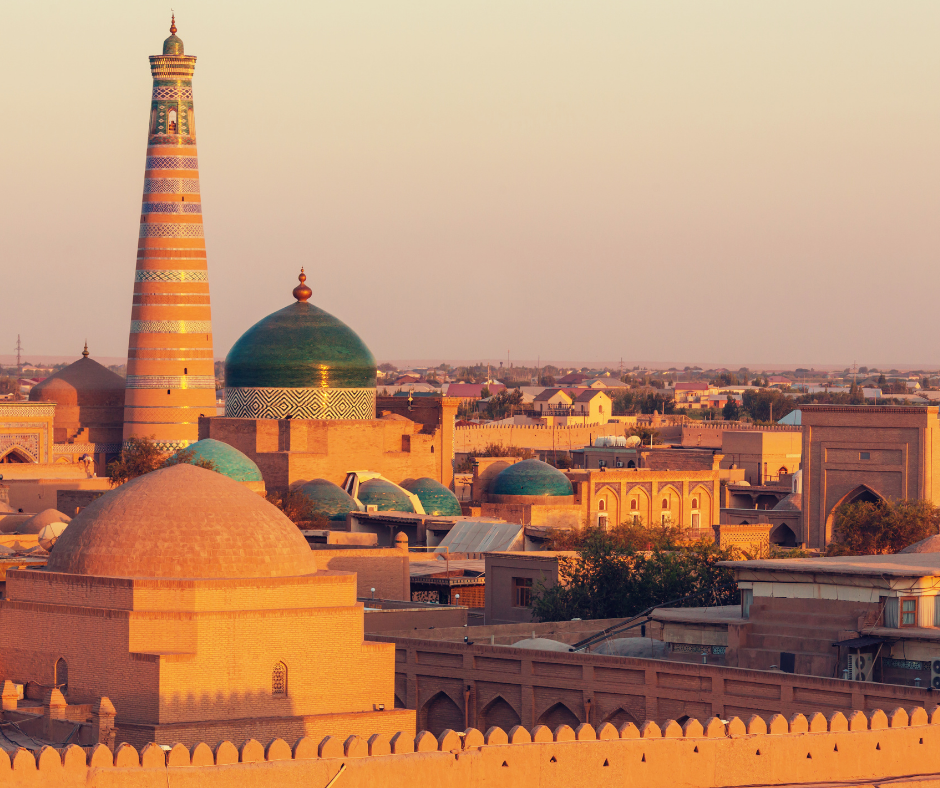
Let’s start with the most visited of the five stans first. Uzbekistan is about amazing jaw dropping sites and legendary cities. In fact, Samarkand’s moniker is ‘city of Legend.’ Uzbekistan’s two major cities for travellers are Samarkand and Bukhara. Known as the ‘two-ladies’ locally, Samarkand is said to be the beautiful lady with a face full of make-up and Bukhara the natural beauty. We don’t know how that came about, its obviously a local joke. Samarkand is home to Uzbekistan’s star attraction, the Registan. A group of blue domed mosques and madrassahs, which are even more spectacular inside than out. It is also home to the tomb of Tamerlane (know as Amir Timur locally) and the necropolis of Shah-i-Zinda. In Samarkand you can also visit the more obscure sites of the Observatory of Ulugh Beg and the Afrosiab Hill from which ‘Alexander the Great’ is said to have viewed the city after his conquest of Central Asia. Bukhara, on the other hand is home to the Lyabi Haus ensemble, a central fountain surrounded by historical buildings, shops and restaurants, the spectacular Kalan Mosque and the enigmatic fortress of the ark, in which is contained the infamous ‘bug pit’.
Besides Uzbekistan’s two legendary cities, there are many reasons why you should visit this country as part of your five stans trip. The capital Tashkent, with its Soviet style metro, blue domed mosques and madrassahs and the epic Chorsu bazaar should also make the cut.
In fact, bazaars in general should be a major part of your trip through the five stans, as many of these markets will be hundreds of years old and steeped in the traditions of the Silk Road. So, make sure you haggle up a storm and become part of the history of the ancient trade route.
Shahrisabz, the birthplace of Tamerlane is another place not to be missed. Shahrisabz is home to more blue domed mosques and the impressive Aksaray Palace. If you’re up for something a little more off the beaten path and very remote, why not head to the region of Karakalpakstan in the far west of the country. Here you will find a people still practicing their local traditions and crafts, which differ from those in other parts of the country. This area is also home to the ancient city of Khiva, with its fantastic old town, perfect for exploring and getting lost on foot, as well as the Aral Sea ship graveyard which is located in the town of Moynaq.
How do I get around in Uzbekistan?
If you are travelling independently, your best bet is the local train system. The local train system will take you between the major cities but will not be overly helpful in getting to remote places. Beware when using local taxis over long distances, in some cases this is forbidden for foreigners. Obviously, the easiest way to get around is to book with a tour operator and let them take care of it.
Kyrgyzstan
Kyrgyzstan is an undiscovered nature lover’s paradise. It’s difficult to talk about its most well-known places because the destination itself is so undiscovered and remote. We like to call it a less touristy option for Mongolia – and believe us Mongolia is already not that touristy.
When we think of Kyrgyzstan, we don’t think of it in terms of cities, but in terms of regions, small villages and natural beauty. In the south of the country, you’ll find jaw dropping mountains and villages like Sary Tash, offering unique homestays close to the border with China, as well as the option to stay in a yurt near the ancient caravanserai (Silk Road lodge) at Tash Rabat. Kyrgyzstan is also home to amazing archaeological sites like Burana with its enigmatic tower and the site of the ‘fortress’ of Koshoy Kurgan – a building with a date and purpose so far unknown.
Kyrgyzstan is a trekkers Mecca, but even if you’re not into hardcore trekking for days on end, some of the most beautiful places in this country are still accessible. Such places include Jeti Oguz, a spectacular red mountain formation, the alpine lake of Song Kul and the ‘Fairy Tale Canyon.’
Kyrgyzstan is likely to provide you with unique experiences you wouldn’t be able to find elsewhere, like meeting the eagle hunters of Bokonbeyevo, yurt building classes, watching a traditional horse game of Kok Boru and even….’frog therapy’. Yes, this is a thing.
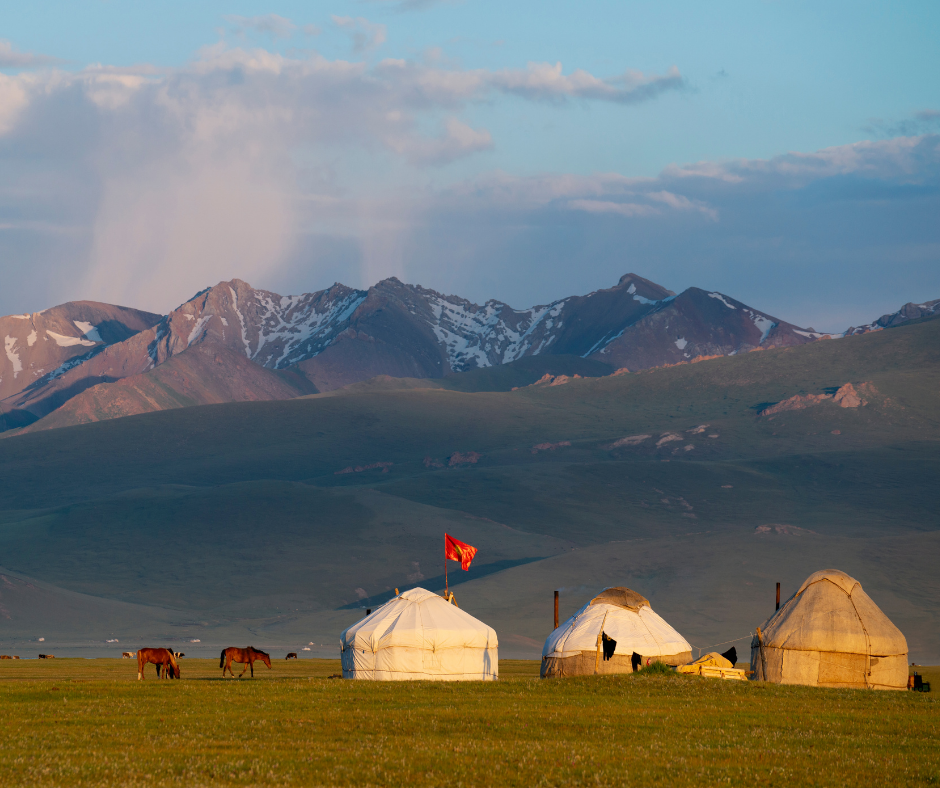
Unfortunately, there is no real reliable public transport like the amazing train system of Uzbekistan. There is a local bus network, but you might find this extremely hard to negotiate if you don’t at least know Russian Cyrillic or speak some Kyrgyz, not to mention it’s a tad unreliable. Chances are if you arrive in Kyrgyzstan independently, you will end up on a tour with a local company, because for most foreigners, its really the only option. Inverted Atlas has a wonderful trip to Kyrgyzstan and yes, frog therapy is a standard inclusion!

Tajikistan
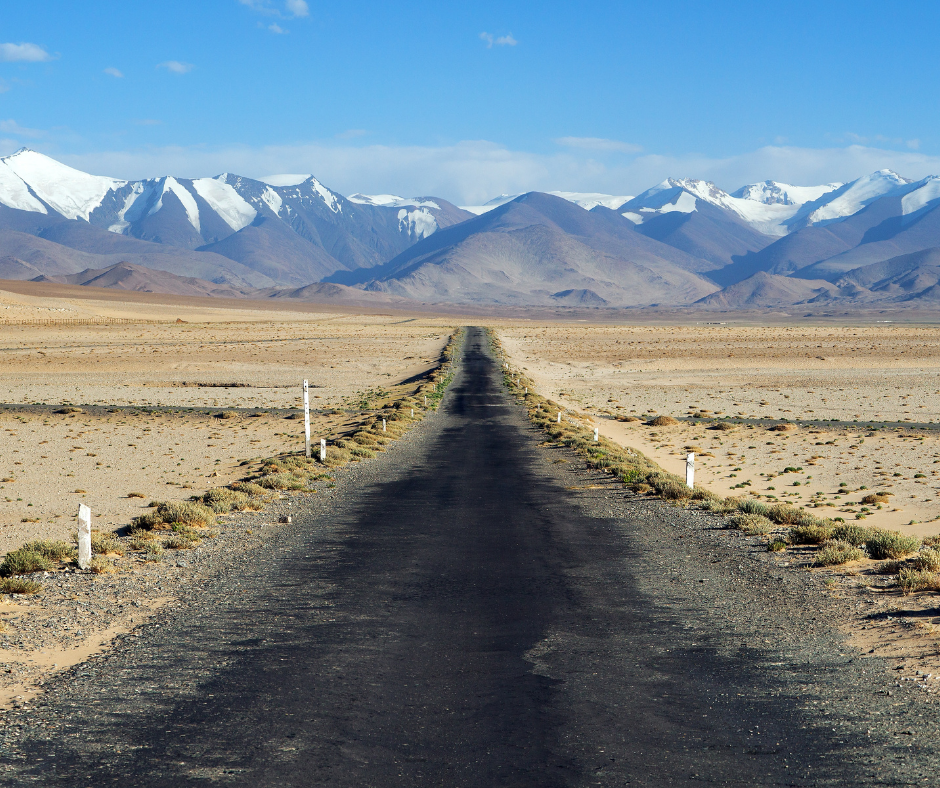
A trip to Tajikistan is usually all about travelling along the famed travel route, the Pamir Highway. Apart from the lure of this amazing road through the mountains, other reasons to visit Tajikistan include getting to know its hospitable people by staying in homestays along the way, hiking and the opportunity to ride a horse or even a yak!
In Tajikistan, you will find many a hot spring to soothe your tired muscles after a hard day on the road and a variety of ancient forts and ruins to explore on your epic road trip. Some of Tajikistan’s premier sites include the fortress of Hisor, a castle constructed around 3000 years ago in the west of the country. In the country’s west also is the ancient city of Penjikent, which was a small flourishing town of the Sogdian era in pre-Islamic Central Asia. It means ‘five towns’ in Persian. The word ‘stan’ also means ‘town’, in ancient Persian, so the countries that make up Central Asia, the five ‘stans’, are literally Tajik-town, Kazakh-town, Uzbek-town, Turkmen-town and Kyrgyz-town.
Tajikistan is another trekkers paradise with treks around the Iskanderkul Lake and of course trekking in the Pamir Mountains, which cover a large amount of Tajikistan’s surface area. The only major city in Tajikistan is Dushanbe, which is a place of modern buildings, palaces and remnants of the Soviet era.
How do I get around in Tajikistan?
As stated above, Tajikistan is made for road trips. It’s not the place for public transport. Hiring a local driver from a local agency or going on a small group tour is most certainly the way to go. The Pamir Highway leads around the country from east to west, however it is not a loop. This means that the easiest way to complete the journey is to begin in Kyrgyzstan and cross the border into Tajikistan in the east and drive to Dushanbe in the west. There is no real path through the mountains in the centre of the country making a loop back to Dushanbe almost impossible. Tajikistan is fairly unreliable with its borders, so make sure the border with Kyrgyzstan is open prior to travel, as it is unfortunately frequently closed. There is also no international airport in the east of the country.
Kazakhstan
Kazakhstan is a land of contrasts. From the nomads of the vast steppe to the space port of Baikonur, it is a hugely fascinating destination with something for everyone. Kazakhstan is home to large cosmopolitan cities like Almaty and the new capital of Nur-Sultan which boasts an array of strange architecture in its skyline. In contrast, it is also a land of wide-open spaces and in a somewhat similar fashion to Mongolia you can often drive (or ride) for hundreds of kilometres with out running into a single person.
In the south of the country, you will find some amazing archaeological sites including the medieval palace of Akyrtas and the ancient city of Otrar. The region around Turkestan is also home to some jaw dropping sites, including blue domed mosques and mausoleums, fortresses and the ancient city of Sauran. One of the most prominent sites in the south of Kazakhstan is the Russian spaceport at Baikonur, which can be very hard to visit and has fascinated the dark tourism scene for decades. This area of Kazakhstan also provides us with a chance to visit the site of the Aral Sea Disaster but be warned that if you thought Moynaq in Uzbekistan was remote, its got nothing on the town of Aralsk, which is the gateway to the former Aral Sea in Kazakhstan.
The west of the country is dominated by the Caspian Sea Coastline, where the vast deserts of the inhospitable Ustyurt Plateau meet the waters of the world’s largest inland lake.
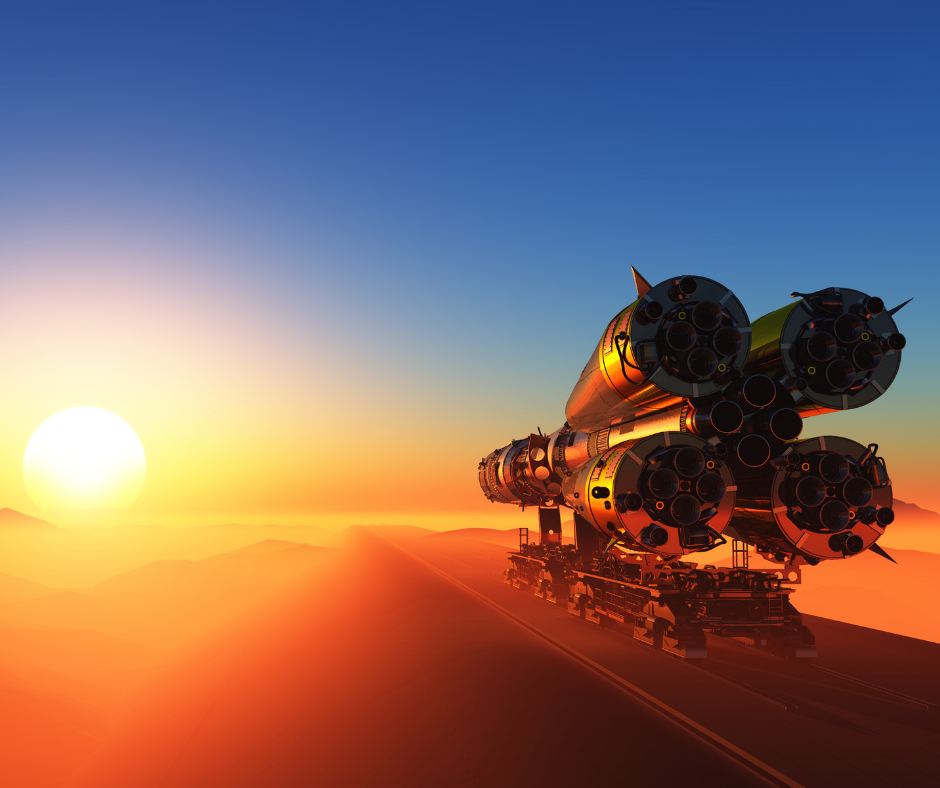
Camping out in Ustyurt National Park is something that shouldn’t be missed on a trip to western Kazakhstan. See the mysterious ‘Valley of the Balls’, salt lakes and the underground Shakpak Ata Mausoleum, as well as visit the Karagiya depression, the lowest point in Central Asia and the five stans.
In the north, visit the ultra-modern capital of Nur-Sultan, before moving on to the town of Semey further towards the east. Russia’s largest nuclear test site may not be for everyone, but the site continues to fascinate the dark tourism buffs especially the ghost town of Chagan and the Semipalatinsk Polygon facility. You may need government permission to visit.
The east of Kazakhstan is all about natural beauty. The country borders the Altai mountains which spread across Kazakhstan, Mongolia, China and Russia. Organising a light trek of a few days from one of the small mountain villages can be a wonderful way to get to know the area on a very local level. Trekkers often visit local markets, participate in banyas by the river (local sauna) and stay at home and farm stays. In what other region could you stay with Kazakhstani bee keepers?
How do I get around in Kazakhstan?
Kazakhstan has a fantastic long distance train system which will be really helpful in getting to and from major cities. Remember that Kazakhstan is a HUGE country and the biggest of the five stans (roughly the same size as Australia) and a train from the east of the country to the west could take several days. Getting to smaller areas and remote villages will require a taxi or possibly the help of a tour company as these are not easily accessible unless you have a firm grasp of the Russian or Kazakh languages which will enable you to use local buses.
Be very aware that the sites of Semey and Baikonur often require special government permission and for Baikonur especially you will need to be on a pre-arranged tour.

Turkmenistan

Turkmenistan holds the title of being the hardest of the five stans to get into. Indeed, it is more difficult to get into Turkmenistan than it is to get into North Korea these days. That being said, its secretive nature has led to a real preservation of tradition. We can imagine that some places in Turkmenistan (apart from the big cities) haven’t changed for thousands of years. In contrast to Kyrgyzstan, Turkmenistan is made up primarily of desert. Turkmenistan contains some really significant archaeological sites such as the site of Nisa, former city of the Parthians and the city of Merv, which was originally settled by the ancient Bactrians and then flourished in under the Greeks. It is rumoured that even Alexander the Great once visited this city.
While in Turkmenistan you may feel somewhat isolated and that you have fallen into some post-apocalyptic nightmare scenario. Turkmenistan is trying to attract tourists, they have built shiny new hotels and attractions, but they haven’t made it easy for people to visit them. Build it and they will come, only works if you can actually get a visa. Consequentially, you may find yourself the only person staying in a five-star hotel, which is quite an eerie experience.
Turkmenistan’s most famous site is located in the north in the middle of the Kara Kum desert. The Darvaza gas crater or the ‘Gates to Hell’ has almost become a symbol of the five stans themselves and is the main reason most people persevere with getting the neigh impossible visa for Turkmenistan. The crater is about four hours from the shiny new city of Ashgabat, and you can stay there over night in the lone yurt camp on site. Do be aware that the Turkmenistani government is currently trying to extinguish the crater which has been burning since 1971 so it may not be around much longer. If you would like to see a bit more of Turkmenistan than just the crater, we recommend a camp out and Yangykala Canyon, a spectacularly remote place in Turkmenistan’s west. Trust us, you can’t get anymore off the grid than this.
How do I get around in Turkmenistan?
At the time of writing (2nd June 2022) Turkmenistan is still closed to visitors due to the COVID-19 pandemic.
In normal times, however it is usually not possible to visit Turkmenistan with out a tour company and if nothing else it makes it much easier to get a visa. Most tour operators provide visa assistance or get a group visa on arrival in the country. Turkmenistan has a train system, but as a foreigner it is unlikely that you will be allowed to travel around on your own.
For more information or to chat about any of our tours feel free to give us a call on +61 (2) 7229 1926 or drop us a line at info@invertedatlas.com



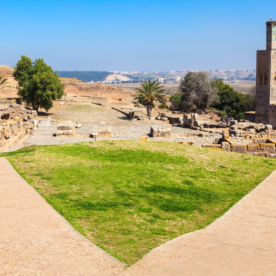
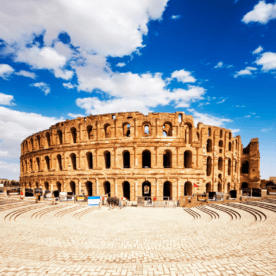
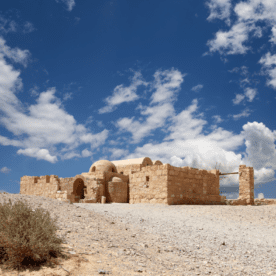


Nannie
It’s a pity you don’t have a donate button! I’d
without a doubt donate to this superb blog! I
guess for now i’ll settle for bookarking and adding your RSS feed to my Google account.
I look forward to brand new updates and will talk about this blog with my Facebook
group. Chat soon! https://Telegra.ph/The-Art-of-Writing-a-Game-Blog-03-15